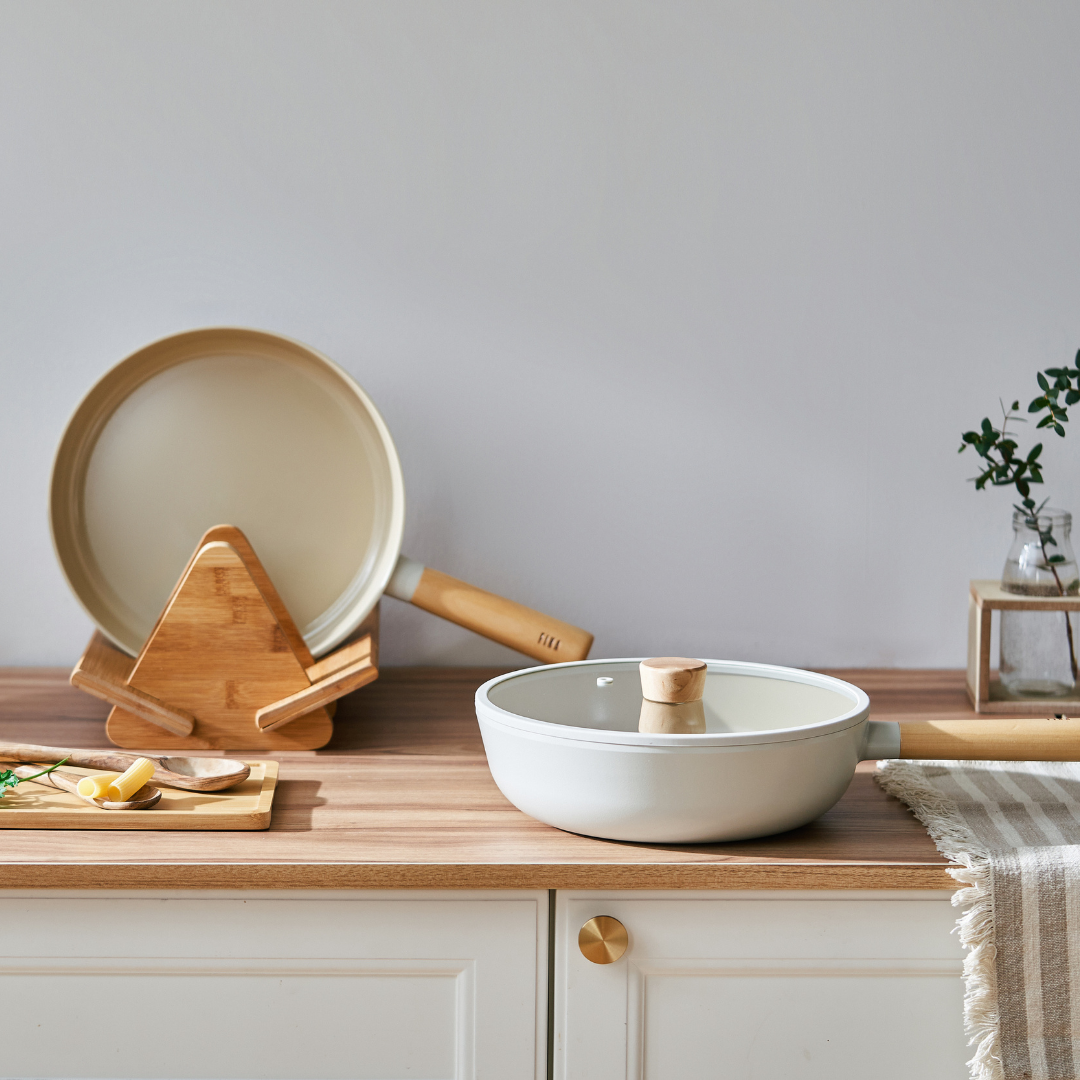
Is Ceramic Coating Good for Cookware?
Share
Over the course of the years, ceramic coated cookware has been gaining popularity and has become a staple item in many kitchens. If you were to look in the kitchen of a fellow peer or friend, you would most likely see at least one ceramic pot or pan.
Ceramic cookware is the ideal kitchen tool if you are looking for healthy and heat-efficient cookware. However, despite its many benefits, one question remains unanswered: Is ceramic coating good for cookware?
Today, we are going to further explore ceramic coatings and their impact on cookware, to help you make both a confident and educated choice when choosing your next set of cookware.
What is a Ceramic Coating?
The word ceramic refers to fire-hardened clay, which has long been used for pottery, dishes, and other decorative purposes for thousands of generations.
The clay is composed of hard-anodized aluminum, which is then coated with inorganic minerals such as silicon and oxygen to create a non-stick coating. When combined, a ceramic coating is created.
Its chemical composition is the same as sand or stone and allows for a smooth glide following application.
Since the 1940s, fluoropolymer coatings such as Polytetrafluoroethylene (PTFE) have been used to coat cookware due to their non-stick abilities.
However, it has since been revealed that PTFE cookware possesses toxicity from its metal compositions.
As ceramic coatings are comprised of natural minerals, there is no toxicity transferred from the cookware to the meal. As a result, it is safe, healthy, and just as easy to use as cookware with PTFE.
How are Ceramic Coatings Made and Applied?
Cookware coatings have long been utilized to make cooking both efficient and easy for the user. When many think of ceramic cookware, they tend to believe that the cookware is made solely of ceramic. However, that is not the case.
Ceramic coated cookware is any cookware with a thin ceramic covering on top. The middle of the cookware typically consists of a metal core, which varies in the type of metal depending on where you purchase the cookware from.
Many companies utilize an anodized aluminum, iron or stainless steel metal core. No matter the metal core, all ceramic-coated cookware has a metal base.
Ceramic cookware is coated using a Sol-gel technique. Sol-Gel is a method of converting the sand-liquid solution known as silica (sand) into a gel that can be applied to any metallic object.
The ceramic cookware is either sprayed or dipped into the mineral gel, which is then hardened by a high heat process known as curing.
Once applied, the ceramic coating possesses a nonstick component that has various benefits when it comes to cooking.
Is Ceramic Coating Safe?
Now, it’s time for the big question: Is ceramic coating safe?
The short answer, yes.
According to various studies conducted by ceramic manufacturers, ceramic-coated cookware does not generate any harmful gasses when heat is applied.
You could heat your ceramic-coated cookware over 450 degrees celsius, and it will continue to pose no toxicity.
Unlike a Teflon-coated pan which would emit harmful gasses when high heat is applied and begin to break down, ceramic-coated cookware does not possess such traits.
As a result, ceramic-coated cookware possesses no health concerns or toxicity when food is transferred from the cookware to your plate.
Healthy Cooking with FIKA
Upon further inspection, we have concluded that ceramic-coated cookware is both safe and effective when it comes to meeting your cooking needs.
Ceramic cookware has been crowned one of the safest and healthiest cookware alternatives, for a variety of reasons.
Start your journey to healthy cooking today with FIKA, and explore our array of ceramic-coated cookware.
